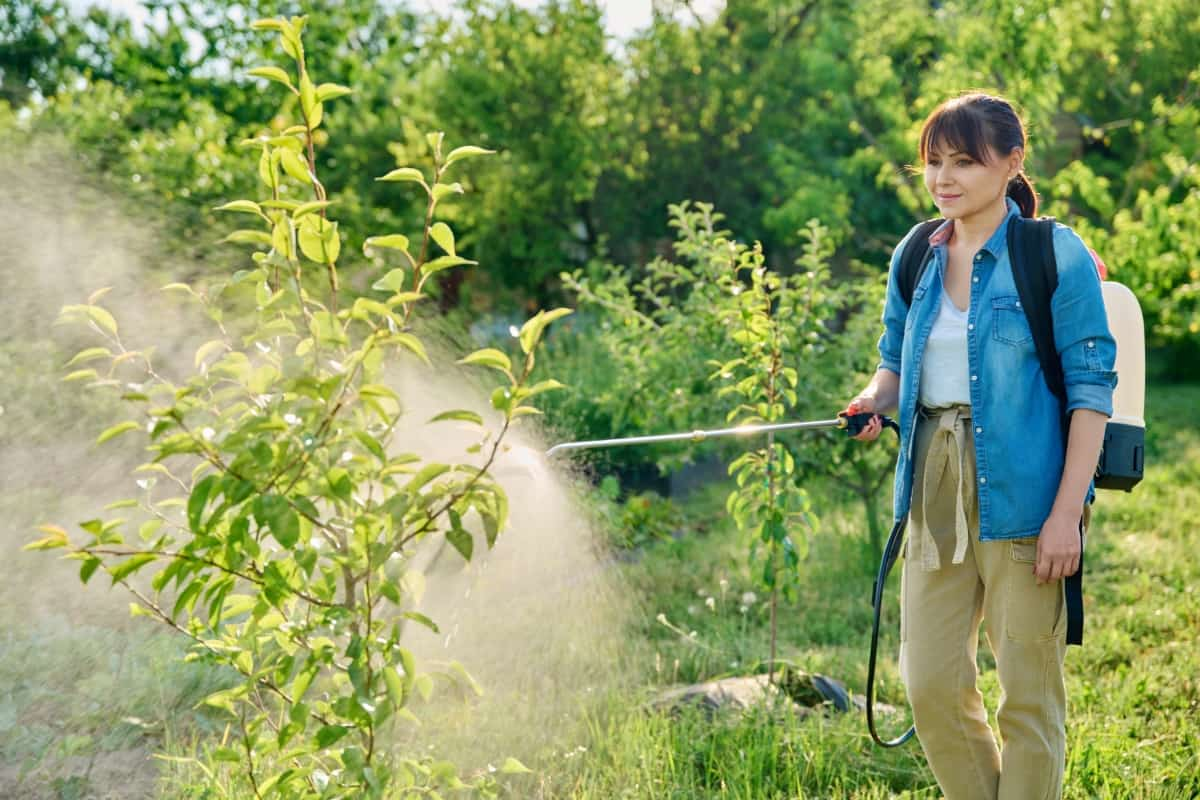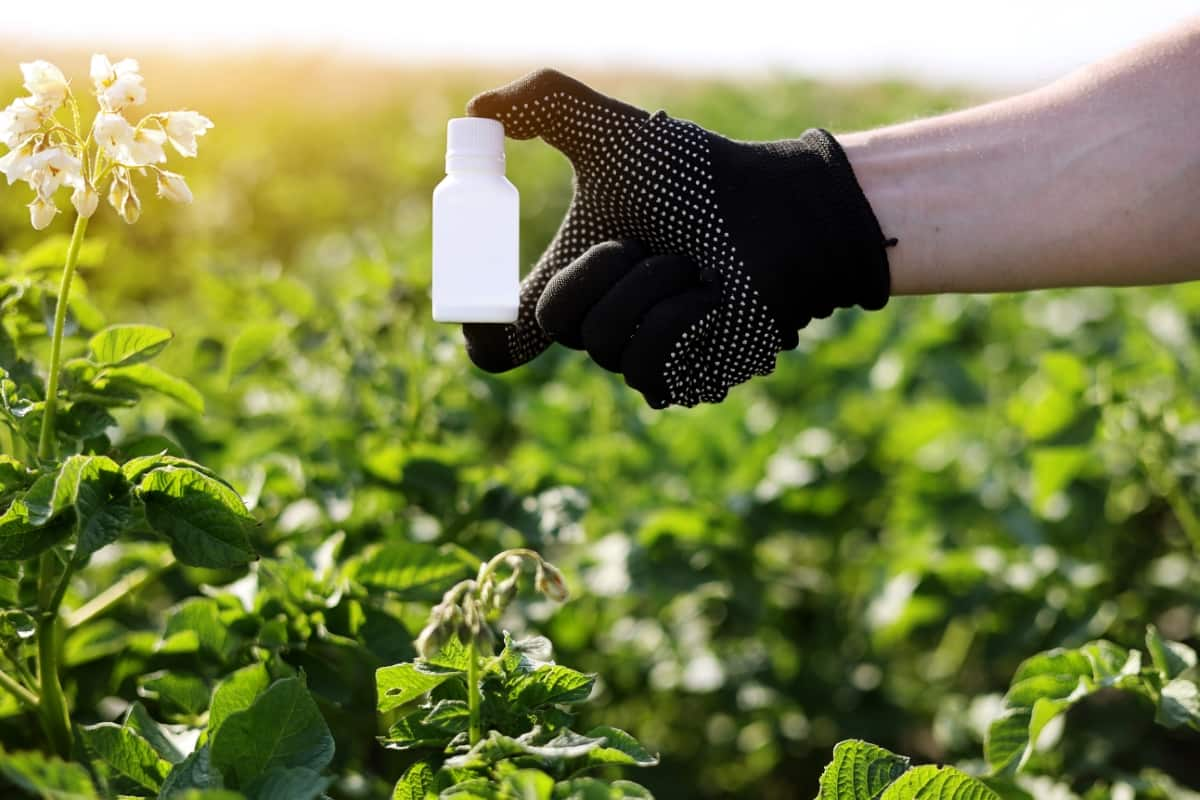Fungicides are chemical compounds used in agriculture to control and prevent the growth of fungi on crops. These substances work by inhibiting the development of fungal spores or disrupting their cell processes, ultimately stopping the spread of infection. By applying fungicides, farmers can safeguard their crops and ensure healthy yields.

Contact Fungicides
These fungicides work on the surface of plants, forming a protective barrier to prevent fungal spores from germinating. Contact fungicides are effective against a wide range of fungi by directly killing or inhibiting their growth upon contact. They are particularly useful for controlling diseases such as powdery mildew, rust, and leaf spot.
The advantage of contact fungicides is their ability to provide immediate protection after application. Farmers often rely on contact fungicides as part of an IPM strategy to combat fungal infections and protect crop yields effectively without harming beneficial insects or the environment.
Systemic Fungicides
Systemic fungicides are crucial tools in the fight against fungal diseases in agriculture. They work by being absorbed into the plant’s vascular system, providing long-lasting protection from within. Unlike contact fungicides, which only protect the surfaces they are applied to, systemic fungicides can move throughout the entire plant, reaching even the most hard-to-reach areas.
This ability to travel within the plant helps systemic fungicides control existing infections and prevent future ones from taking hold. By targeting fungi both inside and outside of the plant, systemic fungicides offer a comprehensive approach to disease management.
Protectant Fungicides
Protectant fungicides are a crucial tool in the battle against plant diseases. These types of fungicides form a protective barrier on the surface of plants, acting as a shield against fungal pathogens. By creating this protective barrier, protectant fungicides help prevent infections before they even start.
In case you missed it: 10 Best Fungicides for Powdery Mildew: 100% Effective Treatment and Control

The key advantage of protectant fungicides is their ability to provide long-lasting protection. By applying these products preventatively, growers can proactively defend against potential fungal threats and minimize yield losses due to diseases. In addition to their protective qualities, many protectant fungicides are also easy to apply and have low toxicity levels, making them safe for both the environment and farm workers.
Eradicant Fungicides
Eradicant fungicides are a crucial tool in the fight against fungal diseases in agriculture. They work by directly targeting and killing existing fungal infections on plants, effectively stopping their spread. Unlike protective fungicides that create a barrier to prevent infection or systemic fungicides that travel within the plant to combat disease, eradicants act specifically on visible fungi already present.
Eradicant fungicides can help salvage infected crops and prevent further damage by eliminating existing fungal pathogens. This targeted approach makes them particularly valuable in situations where quick action is needed to save plants from severe infections. When used appropriately and timely, these products play a major role in maintaining crop health and yield levels.
Biological Fungicides
These fungicides are derived from living organisms like bacteria, fungi, and other microorganisms that help suppress fungal pathogens. Unlike chemical fungicides, biological ones offer a sustainable solution for farmers concerned about environmental impact. They work by introducing beneficial microbes that outcompete harmful fungi or produce compounds toxic to them.
The advantage of biological fungicides is their ability to target specific pathogens without harming beneficial organisms in the ecosystem. Furthermore, these eco-friendly alternatives have shown promising results in managing various plant diseases while reducing chemical residues on crops. Farmers increasingly turn to biological fungicides as part of integrated pest management strategies for healthier yields and sustainable agriculture practices.
Copper-Based Fungicides
Copper-based fungicides are a popular choice among farmers and gardeners due to their effectiveness in controlling fungal diseases. These fungicides work by releasing copper ions that interfere with the enzymes critical for fungal growth, ultimately leading to their demise. The main advantage of copper-based fungicides is their broad spectrum of activity, targeting a wide range of fungi that can harm crops.
In case you missed it: Best Fungicide for St. Augustine Grass: Discover 100% Effective Treatment with These Top 10 Fungicides

Additionally, they have a low risk for resistance development compared to some other types of fungicides. Therefore, proper application techniques and dosage monitoring are crucial when using these products in agriculture.
Sulfur-Based Fungicides
Sulfur-based fungicides are a popular choice among farmers due to their effectiveness in controlling various fungal diseases. These fungicides work by disrupting the metabolic processes of fungi, preventing them from reproducing and spreading throughout crops.
The advantage of sulfur-based fungicides is their low cost compared to other types of fungicides on the market. Additionally, sulfur-based fungicides have shown great efficacy in managing powdery mildew, rusts, and mites on a wide range of crops. Careful application following recommended guidelines is essential to avoid any potential damage to crops.
Dithiocarbamates
Dithiocarbamates are a group of fungicides widely used in agriculture to combat fungal diseases that threaten crops. These chemicals work by inhibiting the reproduction of fungi, ultimately protecting plants from infections. The advantage of dithiocarbamates is their protective nature – they form a barrier on plant surfaces, preventing pathogens from penetrating and causing damage.
This proactive approach helps farmers stay one step ahead in managing crop health. While dithiocarbamates are potent against many types of fungi, farmers must follow proper application guidelines to maximize effectiveness while minimizing environmental impact.
Benzimidazoles
Benzimidazoles are a class of fungicides commonly used in agriculture to combat fungal diseases that threaten crop health. Rotating the use of benzimidazoles with other fungicides is essential to prevent the development of resistance in fungal populations. Additionally, proper application techniques and timing are crucial to maximize their effectiveness while minimizing negative impact on non-target organisms. Benzimidazoles play a vital role in modern agriculture by helping farmers safeguard their crops from destructive fungal infections.
In case you missed it: Best Fungicide for Rice Sheath Blight: Discover 100% Effective Treatment with These Top 10 Fungicides

Strobilurins
Strobilurins are a group of synthetic fungicides that have popularity due to their effectiveness in controlling fungal diseases. Their long-lasting residual activity provides ongoing protection against a wide range of plant pathogens. Farmers appreciate this extended control period as it reduces the need for frequent applications and minimizes labor costs. Moreover, strobilurins have shown efficacy in managing resistance issues that can arise with fungicides.
By incorporating these compounds into an integrated pest management approach, growers can successfully combat fungal infections while maintaining sustainable agricultural practices. Understanding the role of fungicides is crucial for sustainable farming and ensuring food security for our growing population. By effectively controlling fungal infections, fungicides help farmers ensure tto maintain the health of their plants.
- Natural Solutions for Pest Control in Flower Gardens
- Types of Fungicides Used in Agriculture
- Common Issues in the Fruit Development Stage of Pomegranate Farming
- Fruit Development Issues in Papaya: Easy Solutions and Treatment
- Soil-Borne Diseases and How to Protect Your Plants
- Practices to Prevent Disease Spread in the Garden
- From Wilted to Thriving: How to Treat Root Rot Naturally in Houseplants
- Natural Remedies to Cure Brown Spots on Fig Tree Leaves
- Natural Solutions for Poinsettia Problems: 100% Effective Remedies